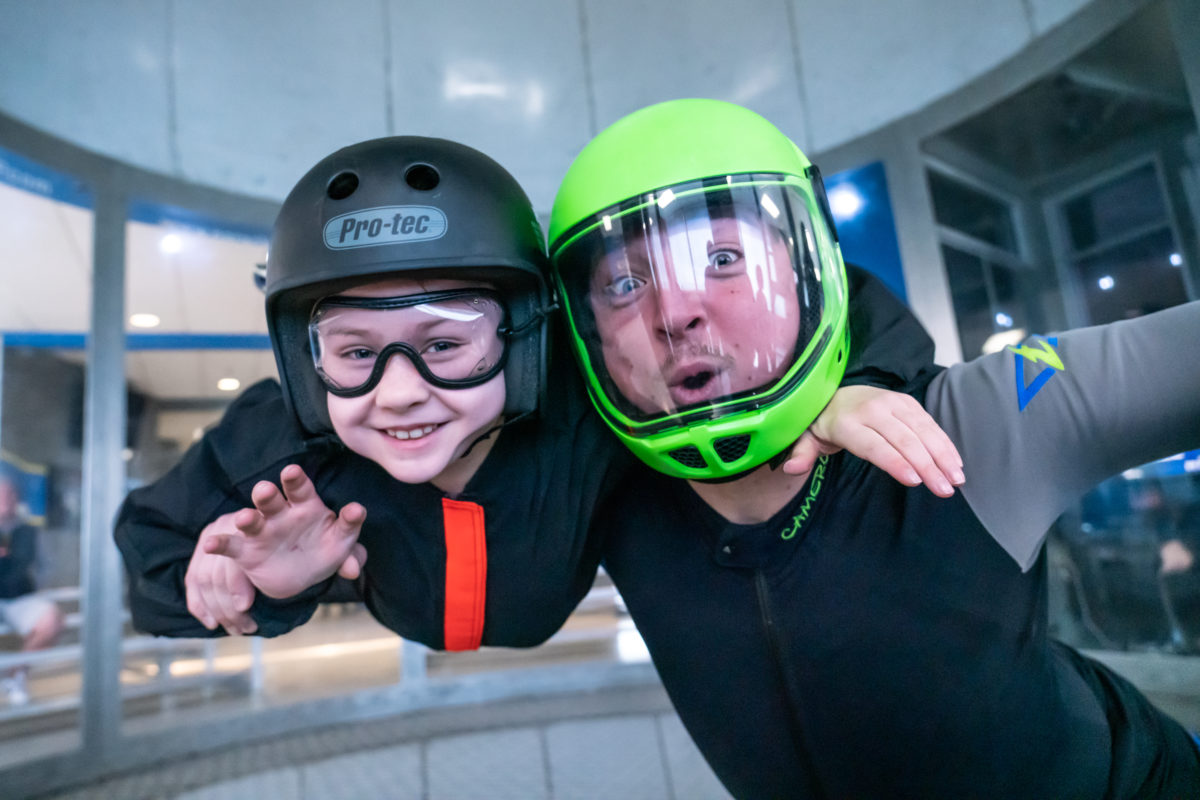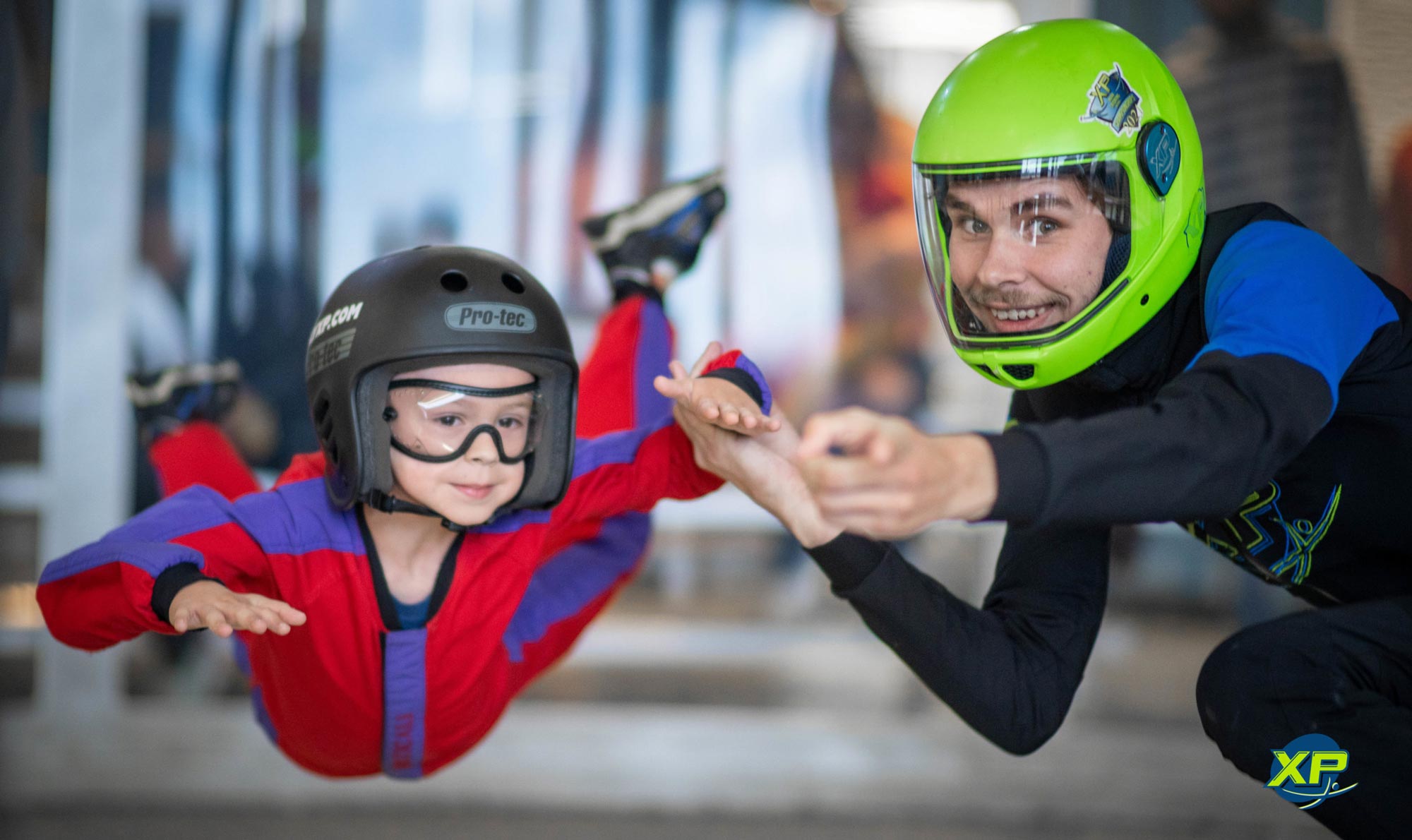
Why is Indoor Skydiving So Short?
Tuesday, April 5, 2022
- Team XP
- 4/05/22
- 0
- General, Indoor Skydiving
Time is money, and when your hard-earned bucks are being spent, you want to make sure you’re getting your money’s worth. With average flight times of 2 to 3 minutes, at first glance, first-time flyer packages may seem incredibly short. So, what gives? Why is indoor skydiving so short?
While indoor skydiving is an activity that can be enjoyed by young and old, it does require that participants are generally physically fit. In part, the active nature of indoor skydiving is why beginner flight times are fairly short.
Two Minutes Has Never Seemed So Long
If you’ve never experienced body flight before, you’re in for a treat – albeit, a rather taxing one!
Flying for the first time in the indoor wind tunnel is like nothing you’ve ever done before. You’re not just floating on a column of air … you’re actively balancing your body by arching from the hips and distributing your arms and legs evenly. Two minutes of flight time may not sound very long, but the small muscles that you’ll activate while flying are rarely utilized and will tire quickly. We’ve found for beginner flyers that 2 to 3 minutes of flight time is the sweet spot.

Build Your “Flying” Muscles To Increase Your Flight Time
If indoor skydiving is a hobby you are interested in pursuing, you’ll want to take it easy at the beginning. It can be tempting to dive in headfirst and to try to do as much time as physically possible, but it’s actually quite wasteful. Trying to tackle too much flight time in the beginning only serves to tire you out and prevents you from flying your best.
As with any sort of physical activity, the more you do it the more accustomed your body becomes to it. Building your flying muscles takes time, and it’s better not to strain your body too early on and risk potential injury. Through consistent incremental flying, you can build your muscles, improve your skills, and increase the duration of time you can fly. If you’re interested in building up your body for indoor skydiving, check out these fitness tips.
Your Experience Includes More Than Just Flight Time
Though your first flight may only take 2 to 3 minutes, the entire experience is composed of multiple steps and takes roughly an hour from start to finish.
In order to run efficiently and to prevent extended wait times, we ask that you arrive about 45 minutes prior to your flight time. After completing the check-in process, we’ll teach you the basic hand signals we will use to communicate within the tunnel as well as the fundamentals of body flight – including achieving stability and using your body to manipulate the airflow in order to turn left and right, back and forth.
As we said, you’re not just going to be hovering on a column of air, you’re going to be flying! After your classroom training, it’ll be time to gear up and enter the antechamber. The doors will seal, the fans will begin circulating, the steady hum will rise, and then, you guessed it: it’s time to fly!

Indoor Skydiving Is Actually Less Expensive Than Outdoor Skydiving
Now, don’t get us wrong, we love both. But comparatively speaking, you get more bang for your buck, freefall-wise, with indoor skydiving. The freefall portion of an outdoor skydive only lasts about 60 seconds. In the basic first-time flyer package for indoor skydiving, you get double that amount of flight time, and did we mention it’s less expensive?
Also, we want to be sure to note that indoor skydiving only mimics one portion of the outdoor skydiving experience, but if freefall is all you’re looking for–indoor skydiving might be the best fit.
Want to see just how long 2 minutes can be? Give us a call and earn your wings!
Copyright © 2025, Paraclete XP Indoor Skydiving, All Rights Reserved.
DropZone Web Design & Marketing by Beyond Marketing, LLC
